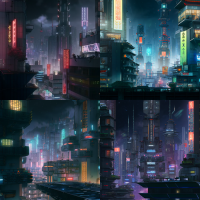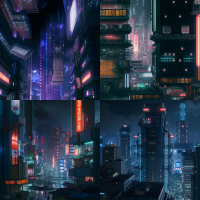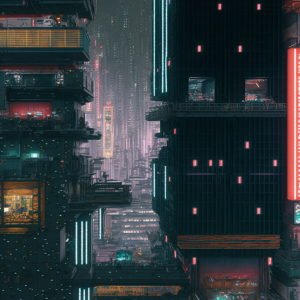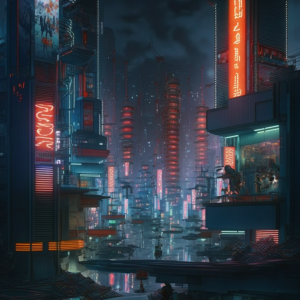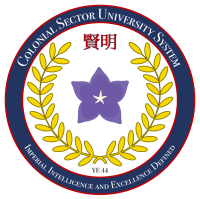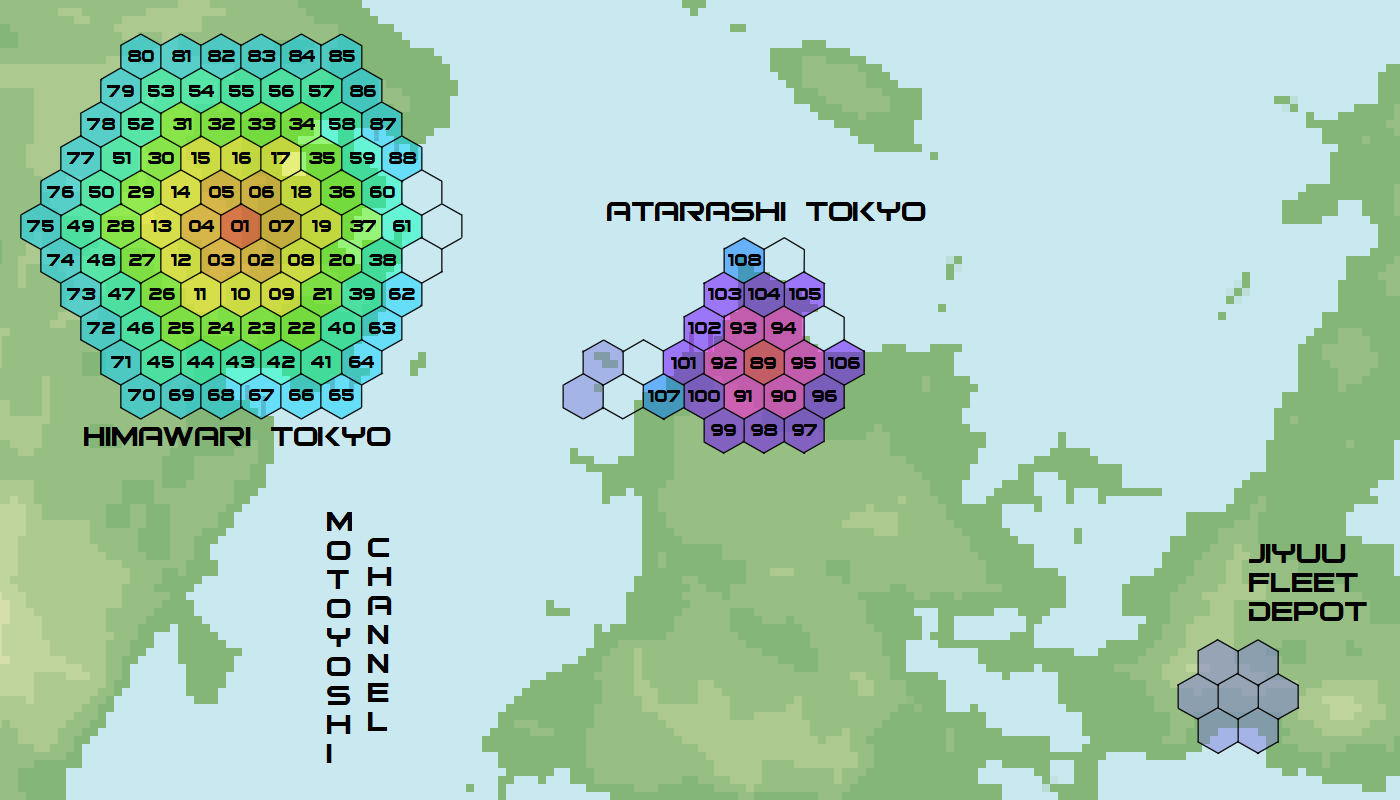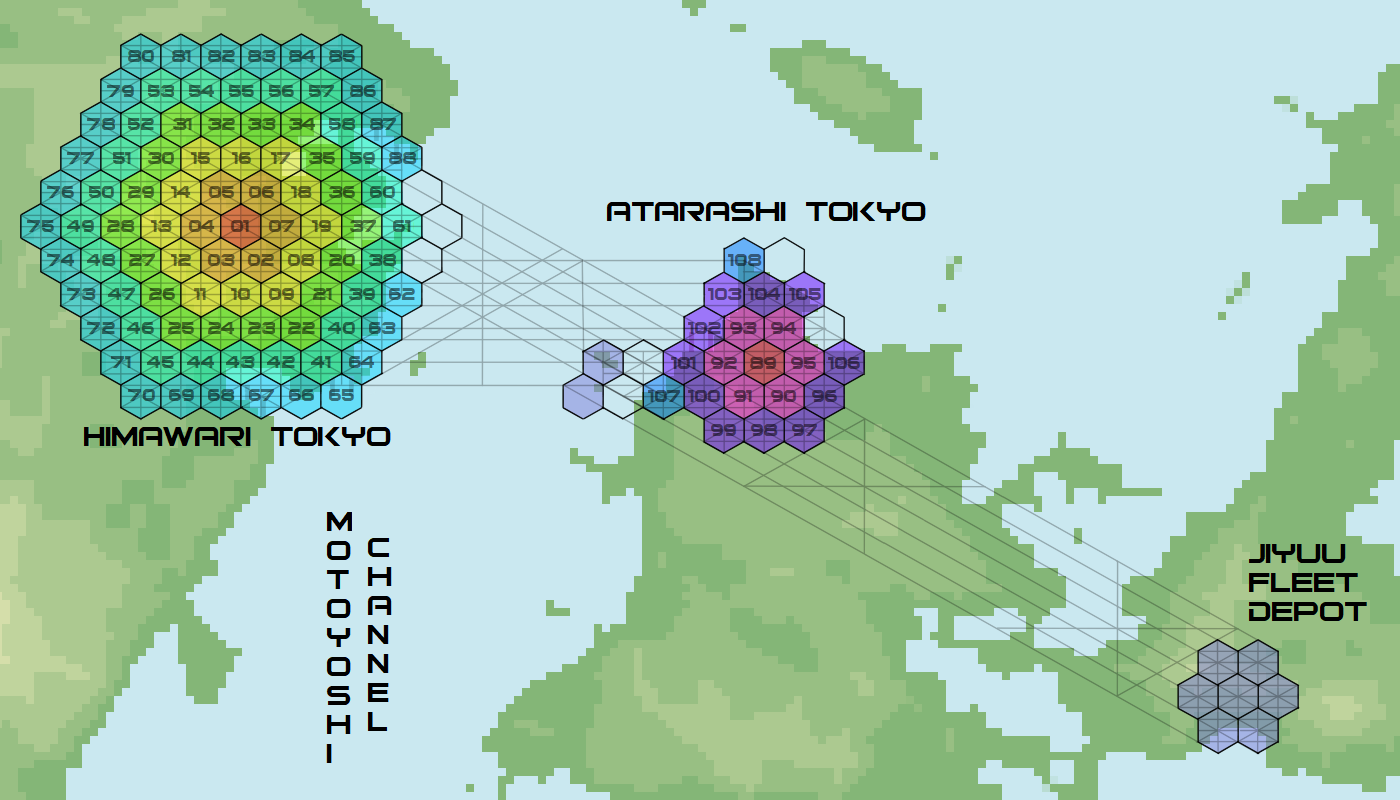Table of Contents
Tokyo
Tokyo is a Gigalopolis, located on Jiyuu III in the Jiyuu System. It is considered to be the Capital City of the Motoyoshi Colonial Sector in the Yamatai Star Empire. It was first established in YE 29.
Tokyo 東京 means Eastern Capital in Yamataigo (邪馬台語). 1)
| Tokyo | |
|---|---|
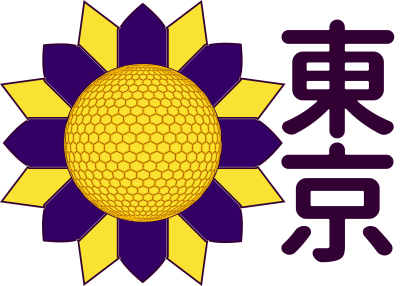 |
|
| Faction | Yamatai Star Empire |
| Region | Motoyoshi Colonial Sector |
| Planet | Jiyuu III |
| Population | 903 Million YE 44 census |
| Mayor | Takahashi Eir |
History and Background
Tokyo was originally constructed in YE 29 around the first colony on Jiyuu III, Tamashii no Jiyuu (“Soul of Freedom”) which would soon be renamed Motoyoshi-Cho. The first version of Tokyo, which occupied the Western Island of Honshu, was built very quickly over the course of that first year. It served as home and capital to those who survived the Battle Of Taiie and the atrocities faced on Pisces Station that followed.
Even in these early days, the Mishhuvurthyar subverted parts of the new nation by means fair and foul. Groups such as the Hanabusa Tributary and the Tange clan were used to cause tension and act on behalf of the Sfrarabla Mishhuvurthyar Xhrafuklurp (SMX) in some cases. This, combined with legitimate concerns over politics and the conduct of the Yamatai Star Empire in various endeavors past and present, led eventually to a split from the Yamatai Star Empire. Tokyo became the capital of a new nation, the United Outer Colonies, later in YE 30.
Black flag operations by the Tange clan along with continued efforts to subvert the fledgling nation eventually led to a civil war between the Tange-led Black Coats and the United Outer Colonies Peacekeeping Forces in YE 32, contributing to the decline of the nation and allowing the Sfrarabla Mishhuvurthyar Xhrafuklurp (SMX) to attack Tokyo directly. The city was heavily damaged and irradiated in places, with evacuations being conducted and the territory returning to the Yamatai Star Empire in YE 33 after the UOC was labeled a defunct state.
Not all of Tokyo's citizens left or would stay away for long. Starting in YE 36, a new section of Tokyo to the east of the old city would be built. It would be dubbed Atarashi (New) Tokyo, and the older city would be considered Furui (Old) Tokyo at the time. Construction on the old section would be neglected until YE 39 when the old city's original architect, Kage Yaichiro, obtained personal ownership of Furui Tokyo from the Yamatai Star Empire's Department of Land and Homes and began a cleanup and reconstruction operation. People could assist in exchange for salvaged goods or even a place to live in the new city, and Yaichiro's Sunflower Corporation would be created initially to assist in the restoration and maintenance of infrastructure. Sunflowers would be used for the radiation cleanup process, and the Sunflower (Himawari) would officially become a new symbol for Tokyo in YE 40. Some would start to use the terms Furui Tokyo and Himawari Tokyo interchangeably at this point depending on personal preference, though Himawari Tokyo is gradually becoming a more common term on signage and correspondence in an effort to re-establish the older part of the city as relevant.
The city's reconstruction was deemed complete in YE 40, just in time to accept refugees from the Ketsurui Military Sector who had lost their homes in an invasion during the Kuvexian War. In YE 42, a massive re-investment on behalf of the Motoyoshi Clan was made, and the Sunflower Corporation became part of the Yugumo Corporation. The return of the Motoyoshi Clan brought about a new age of prosperity and purpose for Tokyo. Local industry was given a kick start, the Yugumo Workers Federation was founded to help bring citizens back to full employment, and served as a filter to ensure those loyal to Tange Terrorist cells did not work their way back into the ranks of the workplace.
The Motoyoshi Clan used the prosperity and success of the region as a platform for a strong Imperialist political direction that brought honor to both them and the Ketsurui Clan. In YE 43, Imperialist Regional Government of the Motoyoshi Colonial Sector officially made Tokyo their Seat of Power. That same year the The Eight Statues were built in the Motoyoshi Channel.
The Eastern Capital Skylines
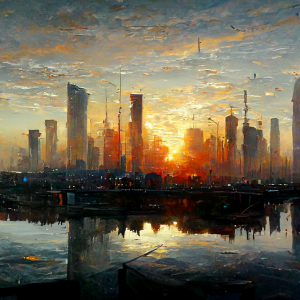 Tokyo is the second-largest city in the Yamatai Star Empire. From the ashes of its past, since the revitalization projects of the Sunflower Corporation to the massive prosperity investment of the Motoyoshi Clan it has become a living and evolving city with a diverse population. It serves as the Imperial Seat of Power for the Motoyoshi Clan through the Regional Inperialist Government of the Motoyoshi Colonial Sector, the home port of both the First Expeditionary Fleet and the Fifth Expeditionary Fleet of the Star Army of Yamatai.
Tokyo is the second-largest city in the Yamatai Star Empire. From the ashes of its past, since the revitalization projects of the Sunflower Corporation to the massive prosperity investment of the Motoyoshi Clan it has become a living and evolving city with a diverse population. It serves as the Imperial Seat of Power for the Motoyoshi Clan through the Regional Inperialist Government of the Motoyoshi Colonial Sector, the home port of both the First Expeditionary Fleet and the Fifth Expeditionary Fleet of the Star Army of Yamatai.
Its architecture is an expression of the city's history. Atarashi Tokyo, the newest division of the city began in YE 36 has developed into a skyline of modern skyscrapers of varying sizes, shapes, and designs. Taking some inspiration from Kyoto, it is a city that has experienced Verticalization increasing density through the construction of towering buildings while maintaining a special balance of connection to the biosphere of the planet in maintained parks and other recreation and conservation areas.
Himawari Tokyo on the other hand melds the architecture of modern design (newly populated expansion areas) with the older surviving relics of the United Outer Colonies, centered in districts such as Motoyoshi-Cho.
Motoyoshi-Cho
Motoyoshi-Cho is the oldest part of Tokyo, having been built over the first colony on Jiyuu III. It is where the Yamatai Star Empire has offices and buildings for its many federal government organizations. It was also the location of the Capital Dome, which housed the government of the United Outer Colonies up until YE 32. In YE 42, it was converted to house the Imperialist Regional Government of the Motoyoshi Colonial Sector, as well as provide offices for the Governor, and elected Senator. The Capital Dome was destroyed in a terrorist attack in YE 44 but is being rebuilt.2)
Jiyuu-jo
Jiyuu-jō is a castle, in the city of Tokyo, on the planet of Jiyuu III, that was built by the Motoyoshi Clan in YE 30 prior to the independence of the United Outer Colonies. It underwent major renovations and restoration in YE 41. The castle is unique in that it is both a private residence and a facility of the Star Army of Yamatai 3).
Business and Economy
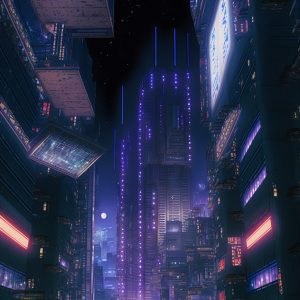 The Yugumo Corporation has dominated the business and industry in Tokyo, mostly because they have been responsible for the colonial management of settlements in the Motoyoshi Colonial Sector since YE 41. They however have encouraged diversity by serving as industry liaisons and inviting other Corporations from across the Yamatai Star Empire such as the Ryu Keiretsu And Yugumo Corporation Agreement of YE 43 which brought Ryu Keiretsu into the region.
The Yugumo Corporation has dominated the business and industry in Tokyo, mostly because they have been responsible for the colonial management of settlements in the Motoyoshi Colonial Sector since YE 41. They however have encouraged diversity by serving as industry liaisons and inviting other Corporations from across the Yamatai Star Empire such as the Ryu Keiretsu And Yugumo Corporation Agreement of YE 43 which brought Ryu Keiretsu into the region.
Tokyo is a HUB for trade and industry in the Yamatai Star Empire, as well as a hotspot for tourism from across the Kikyo Sector.
Since YE 41 and YE 42, Tokyo has seen a huge boost to its economy. Providing headquarters and office locations for massive mining and resource extraction business managed by Yugumo Corporation and Ryu Keiretsu served as vital sources for the Star Army Military Industrial Complex as well as civilian industry across the Yamatai Star Empire during the Kuvexian War. Expansion of Tokyo itself, providing citizens with support services, as well as just the basic needs of the population through retail business has helped with the boom.
Continued economical prosperity came with the movement of hazardous industries to Keiyō City in YE 42, it allowed for more light industrial and green industry development in Tokyo. The announcement of the Colonization Initiative in YE 44 brought further successes as many Corporations operating in Tokyo were involved in everything from building to supplying the fleet.
Corporations Active in the City
Corporations active in the city:
Tourism and Entertainment
Tokyo is a popular destination for tourists from across the Yamatai Star Empire and the Kikyo Sector. It offers a pleasant tropical climate with plenty of beach resorts and hotels. It serves as a HUB for other sightseeing destinations on Jiyuu III, like the Hideyo Islands serving as overnight destinations before and after tours.
The city itself is home to a vibrant nightlife with many shopping malls bars, nightclubs, strip clubs, casinos and other destinations. Thanks to the Yugumo Corporation ventures like Takeda House the city has developed a popular restaurant scene which promotes local culinary styles.
Some popular destinations across the city for sightseeing:
- Jiyuu Jo - Castle and The Hummingbird Keep Museum.
- Imperial Park - A beautiful park made in the honor of Empress Himiko I.
- Jiyuu Maritime Fleet - Awesome maritime outings and cruises.
- Motoyoshi-Cho - Tokyo's historic capital district.
- Tsu Agricultural Zone - Agrotourism destination.
- The Eight Statues - The statues of the Emperor and Empress of Yamatai.
- The Fuji Hotel
- The Tokyo Metropolitan Zoo
- The Motoyoshi Channel Aquarium
Popular places to eat:
City Management and Services
The Yugumo Corporation took over city management control from the Sunflower Corporation, a company that is still one of its subsidiaries, in YE 41. They handle everything from the improvement and maintenance of the city's infrastructure to the management of government buildings and properties. Many of the development properties in the city still belong to Kage Yaichiro and the Yugumo Corporation still provides support for these properties until they are sold or leased. The Yugumo Corporation also awards contracts to other Yamatai Star Empire Corporations that show interest. To show interest, parties can contact Motoyoshi-Igarashi Yuka.
Community Safety Response Stations
Holding to the original design by Kage Yaichiro, city districts are equipped with response stations which serve as hybridized Police/EMS/Fire Control headquarters. The majority of the policing done in Tokyo is done by Yugumo Keisatsu which serves as municipal police. The Yamatai National Police serve as policing at the federal level, however, have a rather low presence in the city due to the previous state of the Motoyoshi Colonial Sector.
Hospitals
Most city districts also have hospitals and medical clinics. These organizations receive oversight and funding from the Yamatai Department of Health and Medicine, the Imperialist Regional Government of the Motoyoshi Colonial Sector as well as from the City of Tokyo. They serve as teaching hospitals for the Colonial College of Medical Sciences.
Education
Since the city's early days there have always been various schools in each residential district. School campus tend to follow the Tsubomi Model, due to the city and Tsubomi both sharing Kage Yaichiro as their original designer.
In YE 44 with the creation of the Colonial Sector University System, the Tokyo University became the largest private urban university in the Motoyoshi Colonial Sector, along with the outlying Shima Oceanographic Institute and Jiyuu University for Agricultural Studies in the Tsu Agricultural Zone.
Geography
Tokyo has been constructed on two near landmasses in the equatorial region of Jiyuu III. In the west is Himawari Tokyo, and in the east is Atarashi Tokyo. The city also includes a series of outlying islands of various sizes.
On the western landmass, Honshu 4), an island that remains the highest populated colonial zone on the planet, it is placed upon a plain of Estuary land that drains into the Motoyoshi Channel, which drains into the North Tokyo Sea to the north, and the Fujisawa Sea to the south. It is near both rainforest biome and savanna biome which dominate that island.
On the eastern island, Shukaku 5), named for the fertile producing region of the Tsu, which is considered a rural zone of the city. The eastern island is dominated by Atarashi Tokyo, which is built upon fertile Grassland and terrain of undulating gently sloped low hills.
Climate
Jiyuu III is a lush world with a tropical climate, Tokyo is present within a tropical rainforest climate in the near equator zone of the planet. There is a very small sway in the average temperature, up to five degrees centigrade from the average of twenty-eight point five degrees centigrade. The region has a heavy monthly rainfall varying from seventy to eighty millimeters of rain during the monsoon season. The Yugumo Corporation in cooperation with the Scientific Studies Service (SSS) has been known to deploy some weather modification techniques since YE 41 to limit the number of high category Typhoon, and excessive, rainfall to hit the heavily populated city.
Population and Land Use
Tokyo is a massive city arranged in 108 hexagonal Districts split between a newer and older part of the city. Each district is a hexagon 40km x 44km tall, and has an area of 1,760 km2. 88 Districts in its western older section are collectively called Furui (Old) Tokyo or more recently Himawari (Sunflower) Tokyo (154,880 km2). Atarashi (New) Tokyo (35,200 km2) consists of the 20 Districts to the east. The districts are all numbered from a central central district, outward and clockwise. Himawari Tokyo's central district is District 1, while Atarashi Tokyo's central district is District 89. The Tokyo Metropolis a total area of 190,080 km2.
The population has significantly increased in recent years, from a mere 170 million, YE 39, to over 900 million as if YE 44. Population increases have been attributed to the strong economy of the Motoyoshi Colonial Sector, relative safety during the Kuvexian War, as well as returning refugees that were temporarily housed in other areas of the Yamatai Star Empire.
Districts and Rural Regions
The following are maps and information on the districts and rural regions of Tokyo:
Notable Districts and Locations
Tokyo is a massive city, these are just some mentionable districts and points of interest.
| Notable Districts and Locations | |
|---|---|
| Himawari Tokyo Districts | Points of Interest |
| District #01 - Motoyoshi-Cho | See: Motoyoshi-cho Notable Locations, Tokyo Spaceport |
| District #02 - Himawari-Cho | Tokyo Memorial and Cemetery, Former Sunflower Corporation Headquarters, Himawari Broadcasting, Himawari Park |
| District #10 - Adlich-Cho6) | Yugumo Fleetworks Manufacturing Complexes - South, Adlich Memorial Spaceport7) |
| District #13 - Freeman-Cho8) | Yugumo Fleetworks Manufacturing Complexes - West |
| District #16 - Miyamae-cho9) | Yugumo Fleetworks Manufacturing Complexes - North, Miyame Spaceport10) |
| District #19 - Urameshi-Cho11) | Yugumo Fleetworks Manufacturing Complexes - East |
| District #28 - Masayoshi-Cho | Yugumo Keisatsu Tokyo Headquarters and Training Academy, Tokyo Prison |
| District #37 - Mitsuya-Cho 12) | Mitsuya Spaceport |
| District #58 - Akanami-cho | Chusa Chuck's Bar and Grill, Squishy Orb (Love) Hotel, Power Pachinko Parlor, Fun Times Arcade (Koya), Suds Onsen (Soap House) |
| District #59 - Natsunami-cho | Big Catch Fishing Company, Natsunami Warehouse Complex, Natsunami Shipping, Natsunami Harbor |
| District #60 - Kazumi-Cho 13) | Senator's Mansion, Kage Yaichiro's residence, Kazumi Beach and Kazumi Harbor |
| District #61 - Midorinami-cho | Tokyo Bay Seafood Restaurant, Midorinami Beach, Midorinami Harbor |
| District #88 - Akina-cho14) | Fort Tokyo, Jiyuu Jo |
| Atarashi Tokyo Districts | Points of Interest |
| District #89 - Ieyasu-Cho15) | Atarashi Tokyo Administration Buildings, Atarashi Tokyo Spaceport |
| District #91 - Fuji-Cho | Fuji Hotel, and the Motoyoshi Bakufu Bunker16), YTP Entertainment Tokyo Headquarters |
Infrastructure
It is notable that most of the major infrastructure for the city is located underground, save for lighting, walkways, some smaller roads, and other miscellaneous measures. The rebuilt Tokyo was explicitly designed not to fall again to siege or attack from above, using lessons learned from her previous fall as well as from the Battle of Yamatai. Much of the underground and underwater structure is made of or covered by Yama-Dura, which fights against deterioration with its regenerative properties, with layers of Yarvex used for waterproofing even in cases of severe damage.
These areas were chiefly created in part by the use of Multi-Purpose Nanomachines, Type 39 in the ground below the water table, though this was closely and heavily monitored and controlled to comply with regulations and other safety concerns. Much of this was conducted by Kage Yaichiro's company, Sunflower Corporation, which was created initially to cater to Tokyo's reconstruction efforts.
Buildings
Buildings in Tokyo, even those which were present before the reconstruction, have basements which are multiple floors deep. Typically, they are made either of conventional materials or of Durandium Alloy and Transparent Durandium. In various cases they can be used as shelters and tend to be the location of garages. Public and civilian parking tends to be down here, as do connections to power, water, and sanitation. The roofs and balconies of such buildings often have gardens for self-sufficiency, mirroring Kyoto's own 'victory gardens'.
Parks and Walkways
Tokyo's parks and walkway system is extensive, designed around the prospect that people do and should spend time outside and walk to destinations which are close by. The community is meant to be a public and open place rather than a site where a bunch of people stay in their own little boxes with blinders on, and the design of the city's districts reflects this. It is not at all unusual to find regional festivals and street vendors along these walkways. While there is a lot of plant life as well, including Sakura trees, a notable presence are sunflowers found in Himawari (or Furui) Tokyo. This is a symbol of the restoration of the old city, as well as a new symbol of the city itself.
Roads, Highways, and Railways
Tokyo's surface roads are small and scenic, but they do not contain the bulk of the city's traffic. Most traffic movement above ground is by walking, floating, bicycles, mopeds, and in some cases motorcycles and small cars. Most travel is done underground in a multi-layer system which travels in eight directions instead of merely four. By being able to travel diagonally instead of in merely four directions, travel times in Tokyo are notably reduced and road density is extremely high to account for the high population. Though underground, the air is constantly circulated and scenic volumetric projections can be created to emulate the surface. Vehicles are also often automated, making accidents a profoundly rare occurrence that happens typically when a non-automated system is employed.
Railways operate in the same manner. Public trains tend to be blue or green with many windows, while military trains are periwinkle or sometimes black with fewer windows. It is also possible to have small private trains, so long as they abide by the railway control system. The movement of items and equipment within Tokyo is rapid and cost-effective as a result of this. The road and rail systems connect not only both parts of Tokyo together, but they also connect to and persist in the Jiyuu Fleet Depot and what may eventually be a base in the Motoyoshi Channel between the two halves of Tokyo.
Transportation
Tokyo is connected to the overall transportation system of Jiyuu III, and is connected by PAINT to the rest of the Yamatai Star Empire. As of YE 43, Port Jiyuu is the major transportation HUB in the region. There are Starports located in all major cities except for Yui's Shrine which is only accessible by train and a private landing zone.
The entire planet is serviced by MagLev trains and all cities have the Tokyo Transportation Infastructure.
 The trains were developed originally for use at REDACTED.
The trains were developed originally for use at REDACTED.
Cruising at 330km/hr during normal operation these trains transport personnel and cargo through the city and to other colonies on the planet. In addition to personnel transport cars, there have been flatbed cars added to the trains to assist with the movement of Standard Starship Cargo Containers and other cargo. During emergency or combat conditions the speeds of the trains can be increased to 440km/hr. The passenger cars are armored with starship-grade Durandium Alloy.
People
The population of Tokyo is predominantly Nekovalkyrja and Minkan, with a smaller but identifiable population of Lorath that remained after the fall of the United Outer Colonies. After the attempted Terrorist Attack at YE 42 Lantern Festival17), hold out citizens in UMC Synthetic Bodies rushed to transfer to Minkan bodies to show respect to the restored Motoyoshi Clan and reject the agenda of the terrorists.
Characters
These Characters are present in Tokyo18):
Roleplay Opportunities
Tokyo has nearly endless potential for roleplay. Some ideas:
- Make a plot about living or working in Tokyo.
- Have a plot centered around one of the city's points of interest.
- Visit Tokyo on Vacation or Shoreleave.
Local Rumors
Some local rumors, might be true and might not:
- The On'nin Ikemen - 隠人イケ面 are trying to establish a presence in some areas.
- The Yugumo Workers Federation has a hidden underground complex here.
- The Motoyoshi Channel is inhabited by a massive sea monster.
OOC Notes
Toshiro created this article on 2018/04/19 16:18. It was GM approved by Wes (4/21/2018) and NTSE approved by Ametheliana (4/24/2018) here.
- City Map Art is by Toshiro.
- UCS and Tokyo University Logos are by Yuuki.
- Other Skyscrapers and Art in Midjourney Bot by Andrew.
Andrew began an update on this article on 2022/10/21 17:25.
- Sent to Yuuki for more art additions.
| Places of the SARPiverse | |
|---|---|
| Opened/Settled (YE) | YE 29 |
| Place Categories | city |
| Risk Level | safe |
